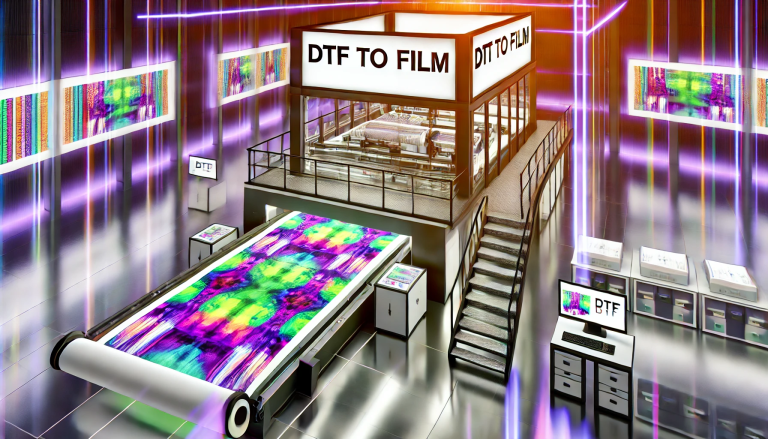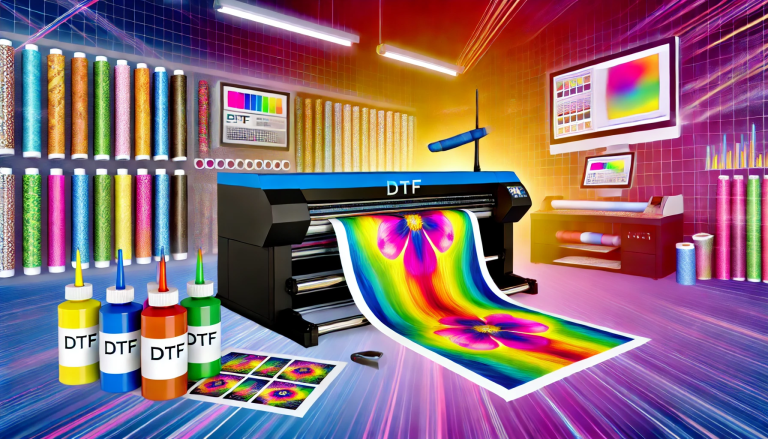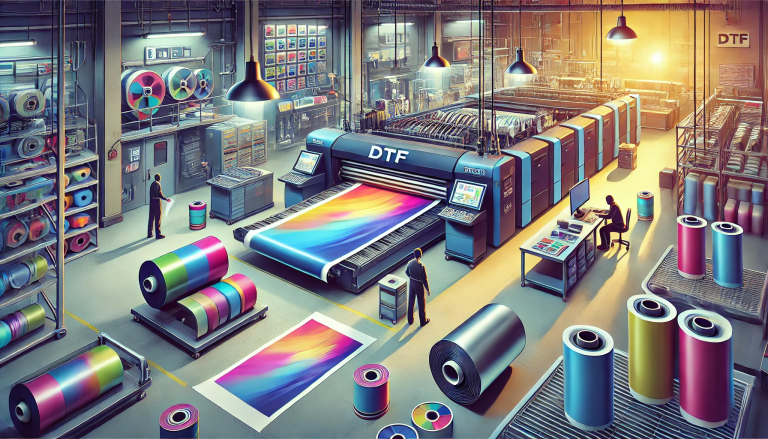“Bring Your Memories to Life with DTF Film Transfer!” -MAXDTF- Heat Transfer Film Manufacturer, Cold Peel DTF Film Supplier, Made in china
Digital textile printing has revolutionized the way custom designs are created and applied to fabrics. Among the many techniques available, DTF (Direct to Film) printing has gained popularity for its versatility, affordability, and ease of use. DTF film transfer is a process that uses a specialized film to print and transfer designs onto various fabrics, making it an excellent choice for businesses and hobbyists alike. In this article, we’ll explore the DTF film transfer process, its advantages, the materials required, and tips for achieving the best results.
What is DTF Film Transfer?
DTF film transfer is a modern printing method that combines digital printing technology with a transfer process to apply designs onto fabrics. Unlike traditional sublimation or screen printing, DTF printing uses a reusable film to print the design and then transfers it to the fabric using heat and pressure. This method is particularly popular for its ability to work on a wide range of materials, including cotton, polyester, and blends, making it a versatile solution for custom apparel and accessories.
Advantages of DTF Film Transfer
- Versatility: One of the biggest advantages of DTF film transfer is its ability to work on both natural and synthetic fabrics. This makes it suitable for a wide range of applications, from t-shirts and hoodies to bags and hats.
- Cost-Effective: Compared to traditional screen printing, DTF printing requires less setup and maintenance. The reusable film and digital printing process reduce material waste and operational costs.
- High-Quality Prints: DTF printing delivers vibrant, long-lasting prints with sharp details. The ink adheres well to the fabric, ensuring durability even after multiple washes.
- Ease of Use: The DTF film transfer process is straightforward and doesn’t require specialized skills. With the right equipment, even beginners can produce professional-quality prints.
- Customization: DTF printing allows for full-color designs, gradients, and intricate details, making it ideal for personalized and unique prints.
Materials Required for DTF Film Transfer
To perform a DTF film transfer, you’ll need the following materials and equipment:
- DTF Printer: A specialized printer designed for DTF printing. These printers use white and CMYK inks to create full-color designs on the film.
- DTF Transfer Film: The reusable film onto which the design is printed. Look for high-quality film that ensures smooth ink release during the transfer process.
- DTF Powder: A special adhesive powder that is applied to the printed film. This powder helps the ink adhere to the fabric when heat is applied.
- Heat Press Machine: A heat press is used to transfer the design from the film to the fabric. Choose a machine with adjustable temperature and pressure settings for optimal results.
- Cardboard or Stabilizer: Placed inside the fabric to prevent the design from transferring to the backside.
- Cleaning Solution: Used to clean the printer’s printheads and remove excess powder.
- Teflon Sheet: Protects the heat press platen from ink residue during the transfer process.
Step-by-Step Guide to DTF Film Transfer
1. Prepare the Design
- Use design software like Adobe Illustrator, Photoshop, or CorelDRAW to create your design.
- Ensure the design is saved in a format compatible with your DTF printer (e.g., JPEG or PNG).
- Export the design with a transparent background if needed.
2. Print the Design
- Load the DTF transfer film into the printer, ensuring the correct side is facing up.
- Use the printer’s software to select the appropriate settings for DTF printing, including white ink for light fabrics or CMYK for colors.
- Print the design onto the film, ensuring crisp lines and vibrant colors.
3. Apply the DTF Powder
- Once the design is printed, use a powder applicator or shaker to evenly distribute DTF powder over the film.
- The powder adheres to the ink, creating a textured surface that enhances the transfer process.
- Gently shake off any excess powder and allow the film to dry completely.
4. Prepare the Fabric
- Choose the fabric you want to print on. DTF printing works best on light-colored fabrics, but with the use of white ink, it can also handle darker materials.
- Iron the fabric to remove any wrinkles or creases, ensuring a smooth surface for the transfer.
- Place cardboard or a stabilizer inside the fabric to prevent the design from transferring to the backside.
5. Set Up the Heat Press
- Preheat the heat press to the recommended temperature (usually between 320°F to 350°F or 160°C to 175°C).
- Place the Teflon sheet on the heat press platen to protect it from ink residue.
6. Transfer the Design
- Place the fabric on the heat press platen, ensuring it’s smooth and wrinkle-free.
- Position the printed DTF film face down on the fabric, aligning the design where you want it to appear.
- Close the heat press and apply consistent pressure for the recommended time (usually 15-30 seconds).
7. Remove the Film
- Once the pressing time is complete, open the heat press and allow the fabric to cool for a few seconds.
- Carefully peel off the DTF film while it’s still warm. The design should now be transferred onto the fabric.
8. Inspect the Transfer
- Check the design for completeness and vibrant colors. If any areas appear dull or incomplete, you may need to re-press the fabric for a few extra seconds.
Tips for Success in DTF Film Transfer
- Choose the Right Equipment: Invest in high-quality DTF printers, transfer films, and powders for the best results. Cheaper materials may compromise the quality of your prints.
- Pre-Test Your Setup: Before performing a full transfer, test the process on a small piece of fabric to ensure proper settings and alignment.
- Maintain Your Equipment: Regularly clean your DTF printer and heat press to prevent clogging and ensure consistent performance.
- Experiment with Fabric Types: While DTF printing works well on most fabrics, some materials may require adjustments in temperature or pressure.
- Optimize Print Settings: Fine-tune your printer’s settings for different types of designs, such as gradients, solid colors, or intricate details.
- Store Materials Properly: Keep your DTF transfer film and powder in a dry, cool place to prevent damage and ensure optimal performance.
Conclusion
DTF film transfer is a versatile and cost-effective method for creating custom, high-quality prints on a wide range of fabrics. With the right equipment, materials, and techniques, you can achieve professional-looking results that rival traditional printing methods. Whether you’re a small business owner, a crafter, or a hobbyist, DTF printing offers endless possibilities for creativity and customization. By following the steps outlined in this guide and practicing regularly, you’ll master the DTF film transfer process and bring your designs to life with ease. Happy printing!






